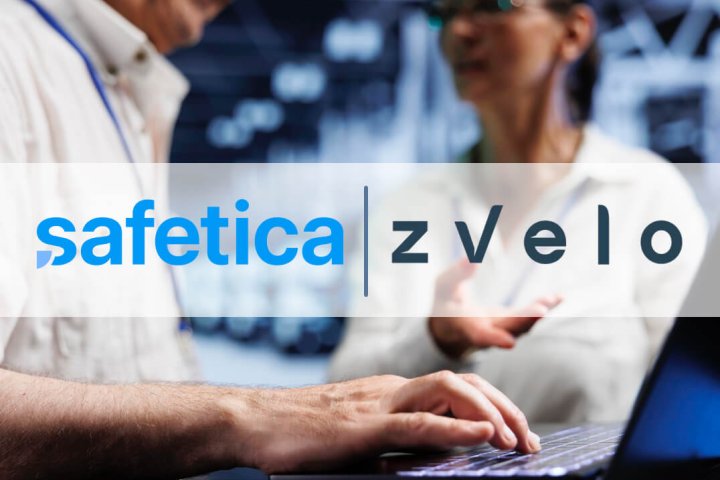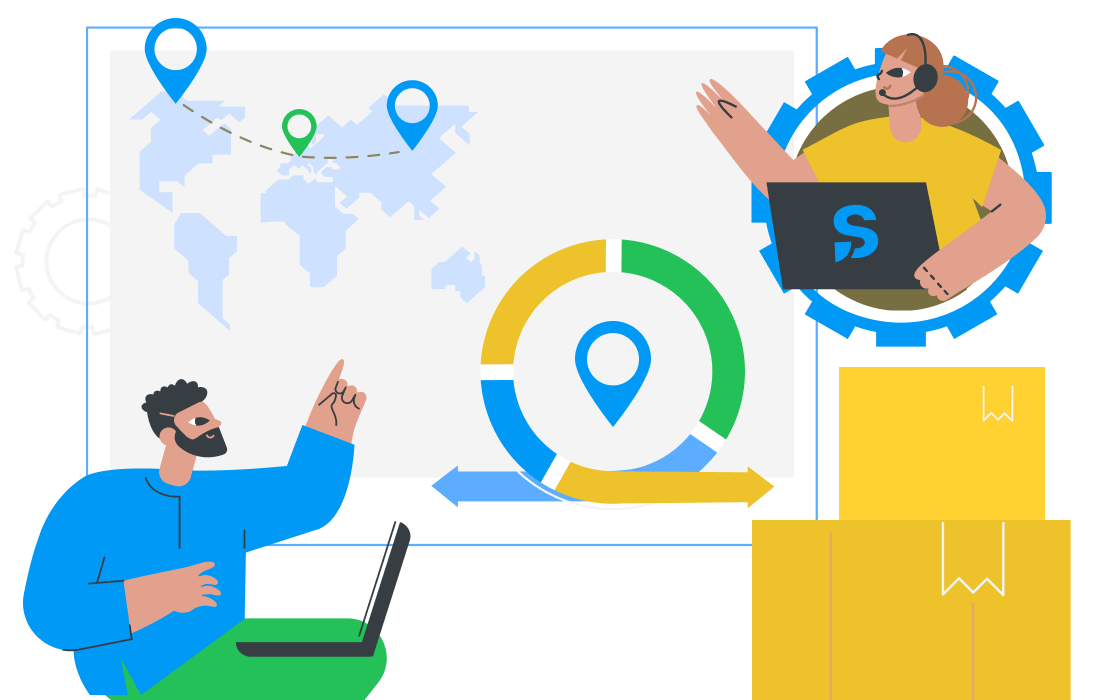From order placement to truck loading, transportation, unloading, and final delivery, every step along the way presents a unique opportunity for data to either face vulnerability or find solace in robust security measures.
In the realm of logistics, where orders pulse through complex systems and materials traverse continents, the protection of sensitive data is crucial. But worry not! Here, we unravel the tale of securing your logistics data, spotlighting the potential pitfalls it may encounter and, more importantly, unveiling a treasure trove of innovative Data Loss Prevention (DLP) measures.
Understanding data loss prevention in logistics
Data loss prevention (DLP) is a comprehensive set of strategies, policies, and technologies implemented to safeguard sensitive data from unauthorized access, leakage, or theft. It involves a proactive approach to identify, monitor, and protect critical information assets within an organization.
In the logistics sector, DLP plays a pivotal role in securing the multiple data streams involved in supply chain operations. What types of data are you trying to protect?
Types of data in logistics
- Customer and vendor data: Personally identifiable information (PII) such as names, addresses, contact details, and financial information related to customers and vendors.
- Operational data: Details of logistics operations, shipment specifics, transportation schedules, inventory details, pricing and payment information.
- Compliance and legal data: Logistics operations are subject to various regulatory and legal requirements. This data encompasses information concerning customs regulations, import/export controls, and industry-specific compliance mandates.
A visual journey of logistics data vulnerabilities
Data within the logistics industry isn’t just moving around virtually and within networks and systems, it’s moving around literally. And with each milestone reached along the way, the prospect of data breaches or loss looms larger.
The following very straightforward logistics scenario can illustrate just how many touchpoints there are on a single simple journey, from order inception to loading, transportation, tracking, and final delivery:
You receive an order for goods to be transported from Point A to Point B that’s across the country. The moment you input order data into your logistics system, sensitive customer information, payment and order details need protecting.
As you begin loading the goods onto the truck, data such as vendor information, inventory specifics, and delivery schedules are all at risk. Any breach at this stage could expose confidential supplier details or the valuable contents being transported.
During the trip, the tracking system becomes a prime target for interception. Cybercriminals could potentially compromise this system, accessing real-time location data and exposing the entire route and potentially sensitive shipment information.
Upon arrival, the unloading process triggers another vulnerability point. Data about inventory checks, quality assessments, and recipient details are susceptible to breaches during this stage.
Even the final signature upon delivery holds sensitive information. It might contain Personally Identifiable Information (PII) or details about the goods delivered, making it imperative to secure this data against any unauthorized access.
At all times, you’ll need to consider:
- Supply chain: Your logistics data weaves through multiple hands - partners, suppliers, and vendors - each intersection a potential vulnerability point.
- Employee involvement: At various stages, your data intersects with employees, whose inadvertent actions or lack of cybersecurity awareness could expose it to risk.
- Technological weaknesses: Digital systems and network infrastructures are vulnerable spots that can be exploited by cyber threats.
- Data transfer and storage: During transit, your data resides in digital formats susceptible to cyber-attacks, especially when stored in databases, cloud systems, or during transmission.
- Compliance risks: Compliance gaps in adhering to regulations, especially in dealing with customs, industry-specific standards, or legal requirements, pose potential threats to data security.
- Cybersecurity threats: Potential cyber-attacks lurk around, attempting to exploit data vulnerabilities at any given moment during its journey.
Strategies for effective DLP in logistics
By applying specific DLP mechanisms at every stage of the logistics process, companies can fortify their data security, mitigating potential risks and vulnerabilities that logistics data may encounter along its journey.
Let’s look at the scenario above, but this time, applying specific DLP safeguards along the way:

1. Order placement:
Encryption: Encryption is a security technique used to protect sensitive information by converting it into an unreadable format (cipher text) using encryption algorithms. This process ensures that unauthorized individuals cannot access or interpret the encrypted data without the corresponding decryption key.

2. Loading the truck:
Access controls: Restrict sensitive information to authorized personnel only. Access controls refer to the mechanisms to regulate and manage who can access specific resources or data within a system, like permissions, authentication measures, or authorization protocols. For instance, only personnel with specific roles or clearance levels might have access to sensitive shipment details or inventory records. This ensures that individuals have appropriate access to perform their duties while preventing unauthorized entry or manipulation of critical data.
Further reading: What is the Zero Trust Approach?
Data masking: This technique involves the modification or concealment of specific data elements to protect sensitive information while still maintaining its usability for authorized purposes. The goal is to ensure that while the data retains its practical value for analysis or testing, the sensitive elements are protected from exposure or misuse. For instance, in logistics, critical vendor details or specific inventory specifics might be altered in a way that sensitive aspects (such as names, addresses, financial data) are replaced with realistic but fabricated information.
3. During transportation:
Real-time monitoring: Real-time monitoring involves the continuous and immediate observation of data activities within a system or network. In logistics, this means using monitoring tools that provide ongoing surveillance and analysis of the tracking system. This helps in detecting any suspicious activities that might indicate potential threats or breaches. Real-time monitoring ensures the accuracy, reliability, and security of data during transit.
Encryption in transit: Encryption is the process of encoding information to protect its confidentiality. Encryption in transit involves applying encryption methods to data as it travels between systems, devices, or endpoints. In logistics, it means safeguarding data while it moves from one point to another – like when information about shipments, routes, or inventory is sent across networks. By encrypting data during transit, it becomes unintelligible to unauthorized parties who might intercept it, ensuring that even if intercepted, the data remains secure and unreadable to anyone without the decryption key.

4. Unloading and inspection:
Endpoint DLP: Endpoint DLP software is a security solution installed on individual user devices (endpoints) like computers, mobile devices, or servers. Its primary function is to monitor and control the data transferred or accessed on these devices. In logistics, this software would specifically monitor activities like inventory checks or quality assessments, ensuring that no unauthorized data is transferred out of the system.

5. Delivery and signature:
Behavioral analytics: By leveraging machine learning algorithms, these analytics tools establish a baseline of typical user behavior. They then identify deviations or anomalies that fall outside the established norms. For example, if a delivery confirmation process usually involves certain steps or access by specific individuals, behavioral analytics can detect unusual patterns or actions that could indicate a potential security threat. By recognizing suspicious behaviors, behavioral analytics helps prevent security breaches during delivery transactions.
Automated data classification: Automated data classification tools utilize AI-based technologies to categorize and classify data automatically. In the context of logistics, these tools specifically focus on identifying and protecting PII contained within delivery confirmations or associated documents. Automated data classification ensures that sensitive information is appropriately protected. This process aids in compliance with data protection regulations and reduces the risk of inadvertent exposure or unauthorized access to sensitive PII.
In addition to the above, you’ll want to focus on two areas that pertain to every journey:
- Employee training in data security: Conducting comprehensive training and awareness programs on data security is fundamental. Educating employees about potential risks, best practices for handling sensitive data, and fostering a security-conscious culture are essential steps to prevent inadvertent data breaches or mishandling.
- Regular data audits and monitoring mechanisms: Implementing regular data audits and monitoring mechanisms is crucial in DLP for logistics. Conducting periodic assessments and audits help in identifying vulnerabilities, detecting anomalies, and proactively addressing potential security gaps or threats.
Technologies and tools for DLP in logistics
Various software and technologies exist that can be specifically tailored for DLP in logistics, offering solutions for encryption, monitoring, access controls, and threat detection to protect sensitive data within the logistics network.
Encryption, DLP software, firewalls
Encryption tools secure data during transmission and storage, DLP software aids in identifying and preventing data breaches, while firewalls act as a barrier against unauthorized access to the logistics systems.
DLP software is a security solution that helps organizations identify, monitor, and prevent potential data breaches or leaks. It works by monitoring data usage, both at rest and in transit, to detect any suspicious activity or attempts to move sensitive information outside the network. DLP software applies policies and rules defined by the organization to ensure compliance and prevent data loss, whether accidental or intentional, by monitoring endpoint activities, network traffic, and data storage.
Blockchain technology
Blockchain is a decentralized and distributed digital ledger technology used for recording transactions across a network of computers in a secure and transparent manner. Blockchain ensures data integrity and security by making the recorded information immutable and tamper-proof. It provides a transparent and verifiable record of transactions, reducing the risk of data manipulation, fraud, or unauthorized alterations in logistics-related information.
AI and machine learning
AI and machine learning involve technologies that allow computer systems to learn, adapt, and perform tasks without explicit programming. In logistics, AI and machine learning applications include predictive analysis and pattern recognition. These technologies play an important role in identifying potential risks, anomalies, or security threats within the logistics data ecosystem.
Further reading: The Dark Side of ChatGPT: How AI Poses a Threat to Data Security | Understanding EU’s AI Act
Why Safetica should be your logistics data security ally
Safetica’s DLP solutions offer comprehensive data protection for your logistics company, providing unmatched security without disruption.
![]()
Seamless integration
Easily deploy Safetica within your existing IT setup, ensuring smooth integration and heightened data security without compatibility concerns.
![]()
Persistent protection
Safetica's technology ensures consistent data security, resisting attempts to bypass DLP even with encrypted or archived files, extending protection to all new documents and file transfers.
Flexible solutions
Choose from on-premises installation for control and security or cloud-based hosting for flexibility and scalability.
Empowering security features
- Sensitive data scanning: Detects and classifies data using content inspection, enabling comprehensive audits and risk analysis.
- Risk management: Identifies insider risks, swiftly detects and notifies of threats, and mitigates them, managing the digital workspace and eliminating potential threats.
- Educational alerts: Reminds employees of security guidelines or blocks risky activities, ensuring a culture of data responsibility.
Ready to fortify the data security measures in your logistics company? See Safetica in action by booking a personalized product demo today.
Next articles

The Age of Data: Why Cloud Growth Raises New Security and Ethics Risks
As cloud adoption surges, security and ethics struggle to keep up. Safetica’s CTO shares how organizations can manage risks in the era of data at scale.




